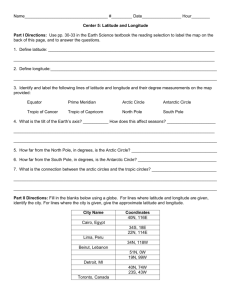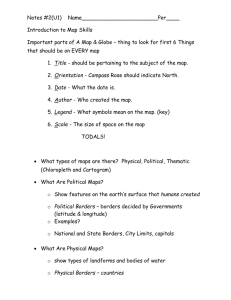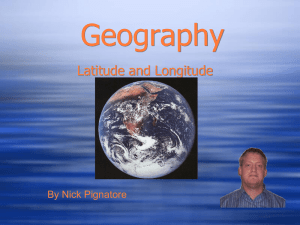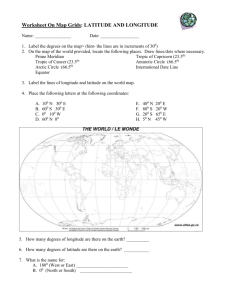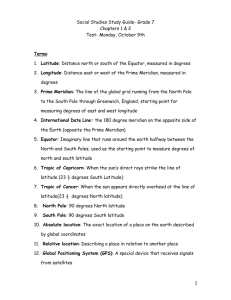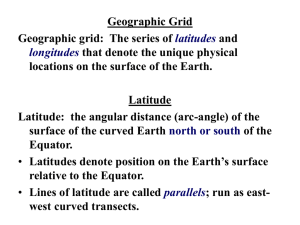Practice Quiz Questions
advertisement
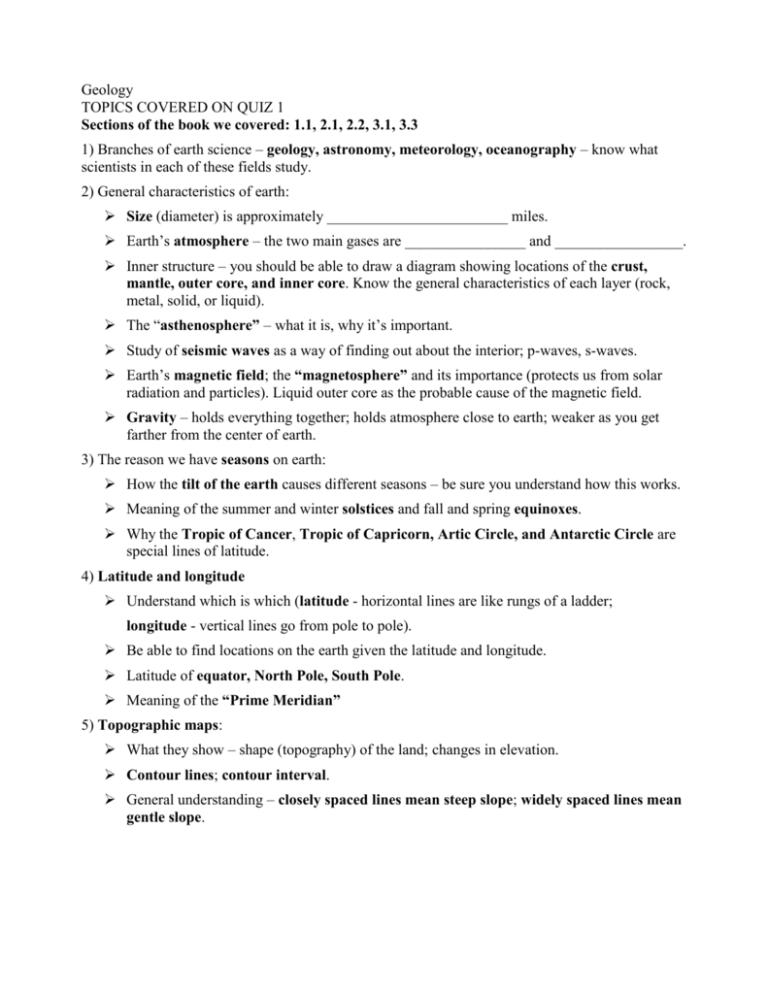
Geology TOPICS COVERED ON QUIZ 1 Sections of the book we covered: 1.1, 2.1, 2.2, 3.1, 3.3 1) Branches of earth science – geology, astronomy, meteorology, oceanography – know what scientists in each of these fields study. 2) General characteristics of earth: Size (diameter) is approximately ________________________ miles. Earth’s atmosphere – the two main gases are ________________ and _________________. Inner structure – you should be able to draw a diagram showing locations of the crust, mantle, outer core, and inner core. Know the general characteristics of each layer (rock, metal, solid, or liquid). The “asthenosphere” – what it is, why it’s important. Study of seismic waves as a way of finding out about the interior; p-waves, s-waves. Earth’s magnetic field; the “magnetosphere” and its importance (protects us from solar radiation and particles). Liquid outer core as the probable cause of the magnetic field. Gravity – holds everything together; holds atmosphere close to earth; weaker as you get farther from the center of earth. 3) The reason we have seasons on earth: How the tilt of the earth causes different seasons – be sure you understand how this works. Meaning of the summer and winter solstices and fall and spring equinoxes. Why the Tropic of Cancer, Tropic of Capricorn, Artic Circle, and Antarctic Circle are special lines of latitude. 4) Latitude and longitude Understand which is which (latitude - horizontal lines are like rungs of a ladder; longitude - vertical lines go from pole to pole). Be able to find locations on the earth given the latitude and longitude. Latitude of equator, North Pole, South Pole. Meaning of the “Prime Meridian” 5) Topographic maps: What they show – shape (topography) of the land; changes in elevation. Contour lines; contour interval. General understanding – closely spaced lines mean steep slope; widely spaced lines mean gentle slope. Practice Quiz Questions: 1. The earth _______________ around the sun once a __________. 2. The earth ________________ on its axis once every ____________________. 3. The reason we have different seasons is ______________________________________________ ________________________________________________________________________________ 4. At the winter solstice (Dec. 21), where are the sun’s rays most direct? a. Tropic of Cancer b. Equator c. Tropic of cancer 5. At the fall and spring equinox, where are the sun’s rays most direct? a. Tropic of Cancer b. Equator c. Tropic of cancer 6. Draw the crust, mantle, and inner and outer core. Tell what each is made of. Show where the asthenosphere is – and tell what it is. By the Way - How wide is the earth? ____________________ 6b. How old is it? _________________ 7. The reason the earth has a magnetic field is thought to be _______________________________. 8. The “magnetosphere” is what? ____________________________________________________. Why is it important? ______________________________________________________________. 9. Lines of latitude determine: a. distance north or south of the equator b. east/west location 10. Lines of longitude determine: a. distance north or south of the equator b. east/west location Draw latitude lines (& some numbers) Draw longitude lines (& some numbers) 11. Contour lines on a topographic map show __________________________________________. Widely spaced contour lines indicate a. steep slope b. gentle slope c. mountain peak 12. What are seismic waves? _______________________________________________________ 13. What can seismic waves tell us about the interior of earth? _____________________________ Why? ___________________________________________________________________________ 14. How did all that IRON get into the center of the earth? _________________________________ 15. What good is that LIQUID outer core anyway? _______________________________________



